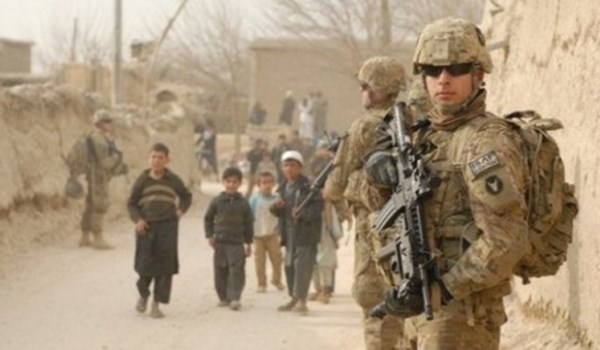
RNA - Pence claimed the situation is “promising” now, saying that the Taliban have been put “on the defensive,” though of course the Taliban have been in defensive situations several times during the protracted war.
We all know how US officials have many times during the course of the war claimed progress against the Taliban, but with the Trump administration’s ever-increasing secrecy about the strategy, troop levels, and day-to-day operations, it is very difficult to gauge by what measure they think things are improving at all, with Taliban territorial holdings still near their highest level since the 2001 invasion.
Afghanistan today looks grim. As already maintained by President Trump, the US has spent more than a trillion dollars and lost more than 2,400 troops there, with no victory in sight. Many US commanders have also declared the strategic situation a “stalemate”. In May, Director of National Intelligence Dan Coats warned that conditions in Afghanistan “will almost certainly deteriorate” in 2018 even with a modest increase in US support.
Several factors explain the US failure: The Taliban’s commitment and perseverance warrant recognition as well. After the US invasion in late 2001, the Taliban were on the ropes. Many Taliban fighters and leaders were dead or had scattered to remote areas of Pakistan and Afghanistan. Those forces steadily gained strength and fought several successful major military operations in 2017.
Meanwhile, US and allied forces have not trained their Afghan counterparts in large numbers to fight the Taliban. Afghanistan’s elite commandos fight well, and there are plans to expand their ranks. But these special operations forces represent only 17,000 troops of the country’s 300,000-strong military. Making morale worse, Afghan military and police increasingly take heavy casualties, losing more than 30 people a day.
Add to this the fact that not a single Afghan wants to see US occupying troops in their country, even government officials and armed forces, and you get the idea why the US military is yet to see any real victory there. By President Trump’s own account, the US military has become bogged down in Afghanistan. The US is not winning the war and Pence better take note.
Trump is far from alone in his Afghan struggles though. Successive presidents George W. Bush and Barack Obama cycled through multiple strategies without bringing the war to an end. Right now, along with the Afghan government's territorial woes, the violence remains relentless. Armed conflict continues to cause severe harm to civilians. Furthermore, this year included one of the deadliest single attacks against civilians since the war began in 2001. In May, a truck bomb struck the heart of the Afghan capital, Kabul, killing more than 150 people.
The US has also been unsuccessful at curbing Afghanistan's massive drugs trade. According to SIGAR, around $8.6 billion of American money has been spent trying to stop Afghanistan's opium production, which is the largest in the world. But more Afghan opium is growing than ever before – thanks in large part to a secret understanding between the CIA and the Taliban!
So what now?
Some of Trump's advisers want to send several thousand additional troops to Afghanistan while others favour the US reducing its role in the war. That said, replaying the past will result in the same future. Further troop deployment is a bad idea. What it will not do is defeat the insurgency and end the war. If the US expands the mission into Afghanistan next year, they may well end up committing their armed forces to permanent state of war.
Washington warmongers remain committed to the war in Afghanistan. For them the conflict amounts to sending military personnel they don’t know from states they don’t visit to fight a war they don’t win in a land they are not welcomed. President Trump claims that he once ran against such madness in Iraq. Then why doesn't his administration wind up America’s longest war?
837/940